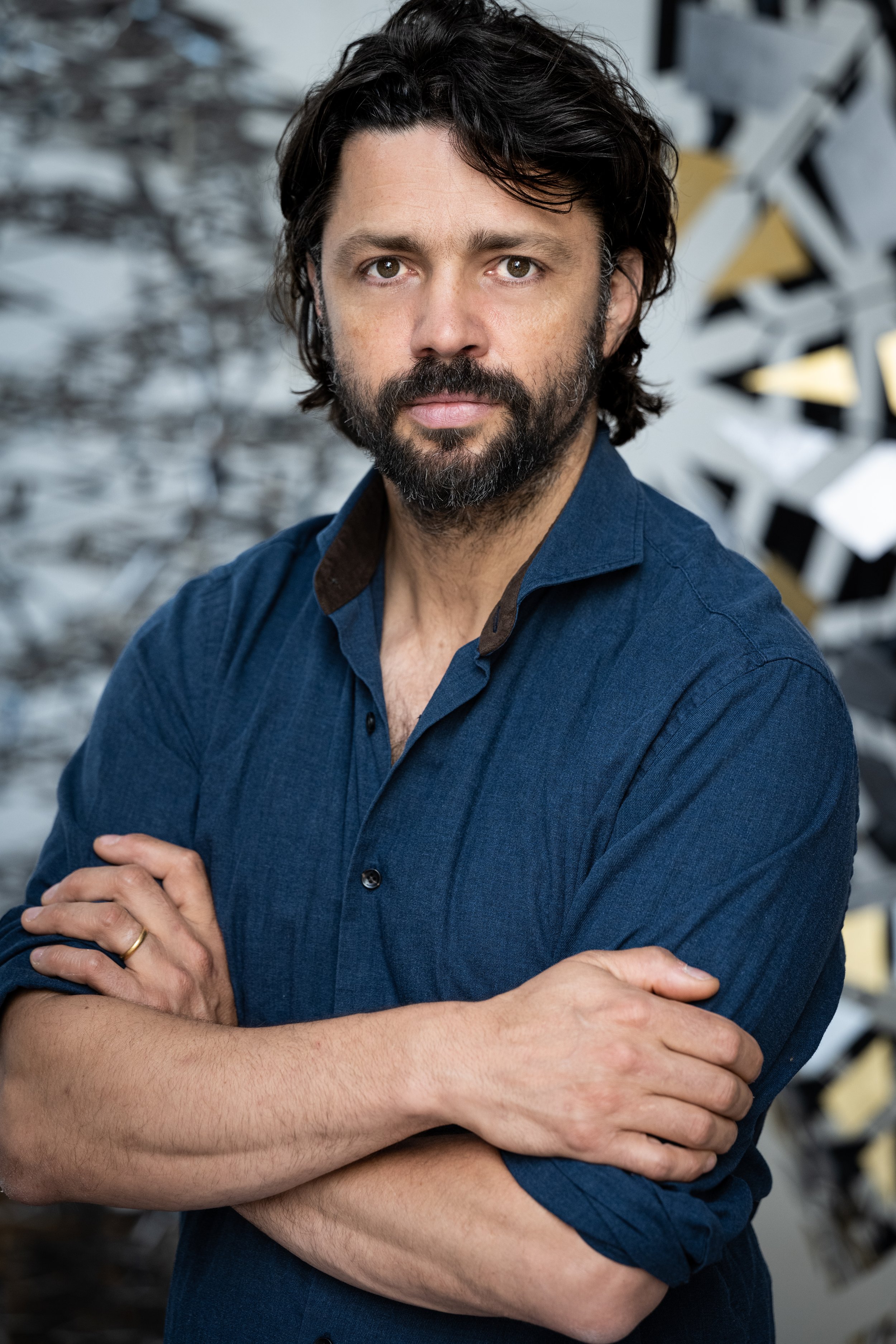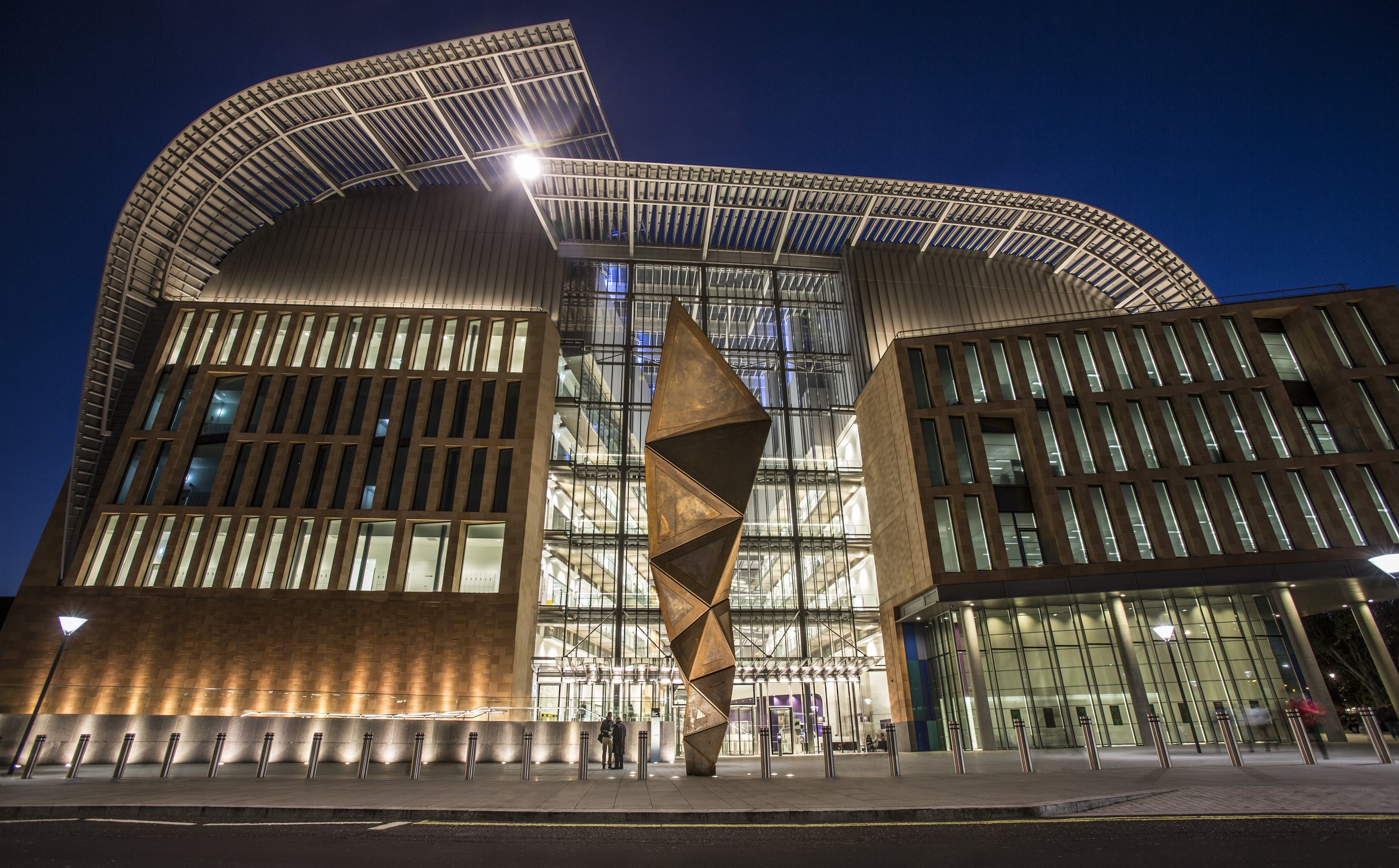A Tremendous Conversation with Conrad Shawcross
PhotoCredit:John-Paul Bland
Conrad Shawcross RA is a British artist specializing in mechanical sculptures based on philosophical and scientific ideas. Shawcross is the youngest living member of the Royal Academy of Arts. He received a Bachelors in Fine Art with Honours from the Ruskin School of Drawing and Fine Art, Oxford University. He received his MFA from Slade School of Art, University College, London and he attended the Foundation at the Chelsea School of Art, London. He has been commissioned by various institutions, including Francis Crick Institute, The Little Art Window, Gstaad, Switzerland; the Ministry of Justice, London, UK; the Contemporary Art Society for Southwark Council, UK; Unilever House, London, UK, and many more. He has exhibited his artwork widely across the globe in various art spaces, museums, and galleries such as Victoria Miro Gallery, Dulwich Picture Gallery, Wadsworth Atheneum Museum of Art, Louisa Guinness Gallery, The Royal Academy of Arts, Josh Lilley Gallery, ArtScience Museum, and many more.
Conrad has received many awards, prizes, and residencies including, Jack Goldhill Award for Sculpture, Urbanomic Residency, Falmouth, UK, Artist in Residence, Science Museum, London. ILLy Art Prize, Art & Work 2008 Award for Space Trumpet, Unilever Commission, International Fellowship at Location One, New York, First Base Acava Free Studio Award, Ray Finnis Charitable Trust Award.
He has been featured in publications and magazines such as The Guardian, The Arts Newspaper, STIRworld, FAD Magazine, London Evening Standard, The Isle of Thanet News, and many more.
I had the pleasure and honor of asking Conrad what advice would he give someone who wanted to pursue art as a career, the role of research in his creative process, how sculpture and creating art is a form of visual poetry and much more.
UZOMAH: What is something that inspires you that has nothing to do with art but becomes a part of your creative process?
CONRAD: I am always inspired by nature and natural phenomena (from sea urchins to the dappled light patterns formed by trees), particularly the mathematics of nature. I look for patterns, rules, and meaning within nature. Rule-based art is always especially exciting to me and I look for these rules and strictures in the world around. All of our world is formed of various building blocks, an idea that has filtered into my own work through my use of the three-dimensional triangular shape of the tetrahedron. Artists and scientists both look for the hidden rules that underpin our reality. We yearn for the patterns, rules. Sometimes they are not there – apophenia is the perception of patterns that are not there.
Formation I (The Dappled Light of the Sun), 2015, Photo Credit Richard Ivey
U: What advice would you give someone wanting to pursue a career in the arts?
C: Always keep a diary. I was lucky enough to start writing a journal when I was fifteen and I now have notebooks going back thirty years. These hundreds of notebooks are an amazing portal into particular creative moments in my artistic practice. Opening every page sends you to a moment in time, an idea, a thought that I brought or can still bring into form that otherwise would have been lost.
U: Can you explain the role research has in your creative process?
C: My practice has always been very empirically led. We create prototypes, research parameters, and conduct experiments for every new idea. We approach problems in a rational, didactic way and pick apart any holes until we have a solution, but the final intent is irrational, poetic.
U: What are some common mathematical and scientific concepts that recur in your work? Why are these concepts dominant?
C: To name just a few: time, space, perception, geometry. Psychogeometry was an idea formed by Maria Montessori, who looked at the potential of geometry for children. She applied her ideas in nurseries before there was language and our neural pathways and ways of thinking are set in stone. She made sequences of colour, of geometry, of form, and other types of repetition, getting to quite complex ideas quickly through repeating something that is very simple. I always encourage people to understand the limits of their own perception envelope and tetrahedrons are important to me in this respect. They are forms that feel that they should tesselate and instead, they defy their expectations and never do so, refusing to comply to our idea of how we see these shapes. Time and space and scientific conceptions of this underpin everything I do. I recently had the privilege of completing a residency at Nottingham’s early gravity laboratory which was deeply fascinating in this respect, making me look again at phenomena such as black holes or black hole ring down.
Fracture (R45S33) - Enwrought Light, 2021 Photo credit Richard Ivey
U: How is sculpture and creating art a form of visual poetry?
C: Because of the breadth of interpretation. A good work of art, like a good poem, will be interpreted differently by everyone who sees it, based on their background: gender, sexuality, political attitudes, scientific beliefs, age, geographic location, mood on that day, and so on. An artwork of mine that is particularly appropriate here is Schism, formed of twenty tetrahedrons that never rationalize and come together properly. No matter which way you put them together a crack, a schism, is evident. Again, whoever sees it sees this ‘collapse’ differently: a theologian will see that God is mischievous, an atheist will say that it proves there's no God, some people say this proves that we're living in a simulation, some people say it's because the European Union is screwed. At this stage, the author is secondary to the viewer who activates the work.
U: Do you have any favorite poets or writers? How do you find they influence your work or have with their words?
C: Carlo Rovelli never fails to expand my thinking with every new idea he explains in his books and his talks. I had the privilege of discussing ideas around art and science as part of an exhibition that I currently have on show at the Mathematical Institute until the summer of 2024, with him, the curator Fatoş Üstek, and the Nobel prize winner Sir Roger Penrose. It was deeply terrifying but fascinating, listening to their ideas as well as how they saw my work in reference to this. In terms of a more canonical poet, I have been very inspired by the work of W.B. Yeats. Last year I created a piece in homage to him, in Chiswick, where he spent some of his life. This piece is a Fracture, its gold and silver rimex leaves both blending into and reflecting its environment in a widening gyre, inspired by Yeats’ poem ‘He wishes for the Cloths of Heaven’.
U: What is the most crucial thing in your studio?
C: My notebooks and my wonderful team, both of which I could do nothing without.
U: What does creating art mean to you?
C: I love having conversations around an object- I’ve never tired of this, the ambiguity around an object and the elusive meaning of things. I look at rules, repetitions, and progressions, seeing how I can take an object beyond itself. This is why so many of my pieces have a strict geometrical rationale: the tetrahedron, the leaves and panels of Fractures and Paradigms growing exponentially, and the fascinating interaction of moiré patterns (which you can see in my recent Patterns of Absence and Beacons series).
U: Why is art such an essential medium to and in society?
C: Art and culture as a whole is the invisible ether that ties us all together. It may only be a small percentage of our GDP but it’s the glue that holds society and cultural practice together. Artists are analogous to nitrogen – 80% of our atmosphere is nitrogen and yet it is a meaningless, inert gas that does nothing. Whereas oxygen (art) is a very small percentage and means everything. We could all be bankers or hedge fund managers but who would produce the cutlery, tables, chairs, art, rooms, lights, culture, books, plays, music, ideas that fill us with joy and nourish us?
For more information about Conrad’s artwork, please visit his website and follow him on Instagram.





